
by Mindy Griffith | Apr 8, 2021 | Educational Articles
Bag It. Guiding one through cancer.
 So, it’s National Read a Roadmap week, and I love a bizarre holiday that connects to many things I love and makes me smile. First, I recall being on a road trip a few years ago, and yes we had GPS on our phones and were using that, when we were trying to find maps of the area we were in just because (okay maybe I wanted to use them later to scrapbook the adventure). At the 3rd gas station we found one, it was dated and covered in dust and the employees thought my friend was crazy for wanting one but we were thrilled!
So, it’s National Read a Roadmap week, and I love a bizarre holiday that connects to many things I love and makes me smile. First, I recall being on a road trip a few years ago, and yes we had GPS on our phones and were using that, when we were trying to find maps of the area we were in just because (okay maybe I wanted to use them later to scrapbook the adventure). At the 3rd gas station we found one, it was dated and covered in dust and the employees thought my friend was crazy for wanting one but we were thrilled!
Then a friend was visiting me and in the side panel of my car I have a few maps, because you never know when you might need one. She found this hilarious and took a picture of it to post on social media asking people if they even knew what they were – she couldn’t believe that I had them in my car. (FYI: I have used them from time to time.)
Now I love technology and frequently use digital maps, but it’s always good to have a back-up plan as we know that technology doesn’t work everywhere or your might not have your phone charged or maybe you just appreciate having things in a printed format. Print makes things easier to share and more readily available (but I encourage you to order those maps in advance of your next trip).
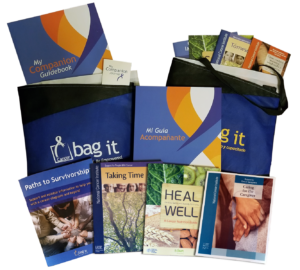 How does reading a map and my random stories (that made me smile with the memories) connect to cancer and Bag It?
How does reading a map and my random stories (that made me smile with the memories) connect to cancer and Bag It?
Reading a roadmap takes some practice, just like understanding cancer. The Bag It bag works as a guide to help those impacted by cancer understand more about their diagnosis and cope with the bumps along the way. When you receive a cancer diagnosis you don’t get the map (digital or print) to go with it. You don’t know the vocabulary, the questions to ask, which treatment to take, or which exit has a support network. You need something to help familiarize you with this experience. Your healthcare team is one guide and a Bag It bag is another valuable guide.
The take-everywhere binder (yep, even on that road trip) helps organize appointments and records (similar to your brochures and itineraries). The booklets provide coping tips, support information, reliable cancer information and questions to ask. It’s all in the bag! You won’t feel lost during or after treatment with Bag It as your guide.
Bag It wants to ensure anyone who wants or needs a bag has them available to them. You can order one as a gift for someone when they are diagnosed with cancer to help them cope or you can order/request one for yourself. They are a doctor-recommended resource for anyone with any type of cancer.
If you don’t currently know anyone who could benefit consider participating in our Spring 2021 Fundraiser – Gift a Bag It Bag. With a $41 contribution you can help provide a source of comfort and the printed navigation tools to help a patient throughout their cancer treatment and beyond.


by Annettra Farrington | Dec 9, 2020 | Educational Articles
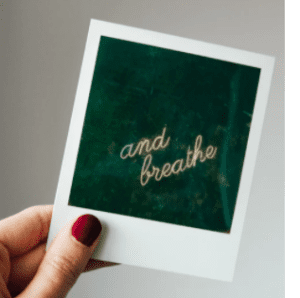 There is a wide variety of relaxation techniques* out there to try in addition to or to pair with your breathing exercises. Sample a few to find the one that is most helpful to you. Regular practice is the key to continued and more profound benefits.
There is a wide variety of relaxation techniques* out there to try in addition to or to pair with your breathing exercises. Sample a few to find the one that is most helpful to you. Regular practice is the key to continued and more profound benefits.
These are just a few:
- Progressive Muscle Relaxation – this technique involves tightening and then relaxing muscle groups of the body as you take slow, deep breaths, usually while lying down. You can self-guide as you work your way up your body or listen to a recording that will lead you through the exercise.
- Yoga – an ancient practice generally involving your breath and moving through different body poses which may include some meditation. There are many types and levels of yoga that can be enjoyed solo or in a group setting led by a yoga teacher. Classes of all levels can be found in your local community or online. A consistent yoga practice will yield increased benefits. Check with your doctor regarding any health conditions before beginning a new yoga practice.
- Meditation – a mind-body practice to increase your awareness of the present moment and promote calmness and relaxation. There are many different types of meditation which focus one’s attention using the breath, mantra, words or an object. Meditation can be guided (sometimes easier when getting started) or self-directed; it can be short or longer in duration. A consistent daily practice typically becomes easier over time and is highly recommended for maximum benefit.
- Visualization (also known as Guided Imagery) – focus your awareness on a pleasing and calming scenario that can be a place, a memory or sensory elements all of your choosing. You can use a guide or pick an environment of your own making.
Links:
Guided-Imagery Meditation from Memorial Sloan Kettering
Other meditations from Memorial Sloan Kettering Integrative Medicine
Gentle Yoga Poses from Memorial Sloan Kettering Integrative Medicine
Healthline’s best meditation apps for 2020
More relaxation techniques with instructions
*Relaxation techniques are generally considered safe for those who are healthy. People with serious physical or mental health problems should discuss relaxation techniques with their health care providers.
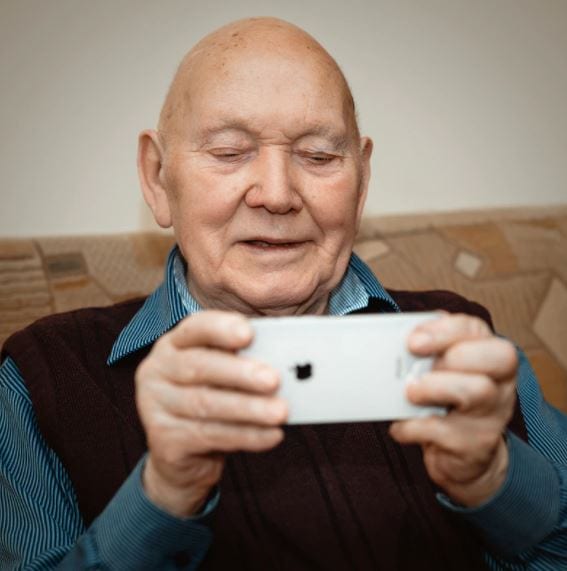
by Annettra Farrington | Nov 12, 2020 | Educational Articles
Caregiving Across the Miles
A long-distance caregiver lives an hour or more away from someone who needs care. Your support could take many forms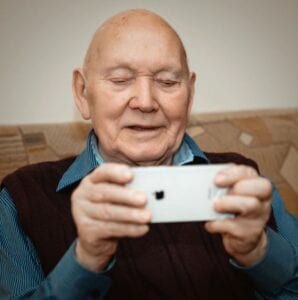 such as connecting by phone, texts, emails and virtual visits, doing research, navigating insurance or finances online, managing the household from afar, coordinating in home care or services, visiting to relieve a primary caregiver, keeping extended family and friends in the communication loop, or even helping with expenses. Even if you can’t be there in person, your role is important and there is much you can do for your loved one no matter where you live.
such as connecting by phone, texts, emails and virtual visits, doing research, navigating insurance or finances online, managing the household from afar, coordinating in home care or services, visiting to relieve a primary caregiver, keeping extended family and friends in the communication loop, or even helping with expenses. Even if you can’t be there in person, your role is important and there is much you can do for your loved one no matter where you live.
Whether you are a new caregiver or have been in this role for some time, these suggestions can make life a little easier for everyone:
-
- Learn about your loved one’s specific cancer type (and/or other diseases), their medications and their treatments.
-
- Ask your loved one and any other caregiver(s) what you can do to help.
-
- Learn about your loved one’s specific cancer type (and/or other diseases), their medications and their treatments. This will help you to anticipate what to expect, enable you to communicate knowledgeably with your loved one, other caregivers, and the healthcare team, as well as assist in future decision making. Before hopping on to Dr. Google check out these tips on how to do research safely online and evaluate the credibility of the websites you source. The Resource Center on the Bag it website features a list of resources for every cancer type and any cancer topic.
-
- Ask your loved one and any other caregiver(s) what you can do to help. Communicating long-distance, even with text and email, is not the same as being there and can be even more challenging. It’s important that conversations are frank and clear. Actively listen to their stated needs and preferences and follow up with questions to be sure you understand. Together, create a checklist of what needs to be done (click here for examples). Be flexible. Keep in mind that your loved one’s condition will change and adaptations will be necessary as time goes by.
-
- Build a team of caregivers if it does not already exist. Take into account what everyone’s individual strengths, interests and limitations are when coordinating who will do what, from where and when. Your loved one should be a part of this important process, if possible.
-
- Get organized. Bag It’s My Companion
 Guidebook is a perfect tool to keep everything in order and in one place. Use it to store medical info, health care and personal contacts, reports/scans/labs, calendar items, insurance info, notes and questions for the doctor, track side effects and symptoms, and much more. The handy forms can be filled in by hand or use the fillable PDF format to print, save and update later, and share electronically with others as you see fit. Find the forms here. Maintaining this information and all the paperwork on an ongoing basis will make this an easy go to reference for caregivers and doctor visits alike.
Guidebook is a perfect tool to keep everything in order and in one place. Use it to store medical info, health care and personal contacts, reports/scans/labs, calendar items, insurance info, notes and questions for the doctor, track side effects and symptoms, and much more. The handy forms can be filled in by hand or use the fillable PDF format to print, save and update later, and share electronically with others as you see fit. Find the forms here. Maintaining this information and all the paperwork on an ongoing basis will make this an easy go to reference for caregivers and doctor visits alike.
-
- Offer to join your loved one’s doctor appointments virtually. The pandemic has greatly expanded the ability for health care systems to easily include caregivers by phone or video conferencing during in-person or virtual office visits.
-
- Gather information about local resources where your loved one lives. Programs and services that assist with in-home care, meals, medical equipment and aides, transportation and other needs may be available to fill some gaps or ease caregiving responsibilities of a primary caregiver.
-
- Being a long-distance caregiver brings its own unique challenges, stress and other emotions, particularly when for an extended period of time. Have your own support system in place and connect with people who understand what you are going through. This could be a caregiver support group, online community, a counselor or even a friend who has also been a caregiver.
More tips for Long-Distance Caregivers
-
- Consider a medical alert system if there is not a caregiver in the home at all times.
-
- New to caregiving? Consider attending caregiving training available through your local aging agency, AARP or other business in your local community or online. This specialized training can include helpful skills such as first aid, physical care and safety, assisting with activities of daily living, and other ways that you can be an effective caregiver in person or from afar.
-
- As a caregiver you may be eligible to take unpaid leave from your job to care for a family member under the Family and Medical Leave Act (“FMLA”). Learn about your rights here and check with your employer regarding potential coverage and FMLA policies related to your job.
-
- Check this list of apps available to help manage many aspects of caregiving.
-
- Pack a travel bag in advance and prepare your own household in the event you need to leave quickly for a few days to attend your loved one.
Helpful Tips for When You Visit Your Loved One
-
- Plan your visit to identify what you want to assess and what you hope to accomplish from a practical standpoint, but don’t forget to also set aside dedicated time to enjoy each other’s company. Do things that are fun and relaxing that are not focused on caregiving or a “to do” list. (These hours could be the ideal time to give the primary caregiver a much-needed respite for a few hours or day or two if you can swing it.)
-
- If possible, accompany your loved one to their in-person doctor appointment. Use the Bag It form My Appointment Summary Log form to note the appointment details and write down the questions to be asked (and answers received).
-
- During the appointment, get your loved one’s permission to allow the healthcare team to share medical information with you and get the necessary paperwork signed along with a copy for yourself. Exchange your contact info with the health care team and discuss the best method for future communication together.
-
- Hold a meeting with your family/caregivers. You bring a fresh perspective and may observe things that a primary caregiver does not notice day-to-day. Continue to listen carefully and be aware that other caregivers are also under tremendous pressure so emotions can run high. If you offer suggestions for more help, be specific about the types of support you are proposing. For example, having a home health aide come in each week, hiring help with yard work or other household maintenance, having groceries or prepared meals delivered, or arranging for transportation for medical appointments.
-
- If not already completed, start the conversations with your loved one and the other appropriate people to have a healthcare power of attorney and a durable power of attorney completed in the event your loved one becomes unable to speak or make decisions for themselves. While these topics can be sensitive and more than one discussion may be needed, executing these documents ensures that your loved one’s wishes will be followed. Advance health care directives are also a tremendous help for the medical team and others potentially making decisions on your loved one’s behalf if needed in the future.
-
- Take care of yourself during visits to your loved one. Get plenty of rest and set aside some time to recharge so you can be your best self with them. Remember you will not solve all the problems and have all the answers but your support, assistance and presence will no doubt mean a great deal to those you care about.
Additional Caregiving Resources:
Caregiving from a distance
Eldercare locator: Find local caregiving and support resources in your community
ASCO Answers Caregiving booklet
Family Caregiver Alliance Handbook for Long-Distance Caregivers
American Cancer Society Cancer Caregiver Resource Guide
Caregiving checklists:
AARP Prepare to Care guide
Family Caregiver Alliance Handbook for Long-Distance Caregivers
State by State Advance Directives:
https://www.aarp.org/caregiving/financial-legal/free-printable-advance-directives/
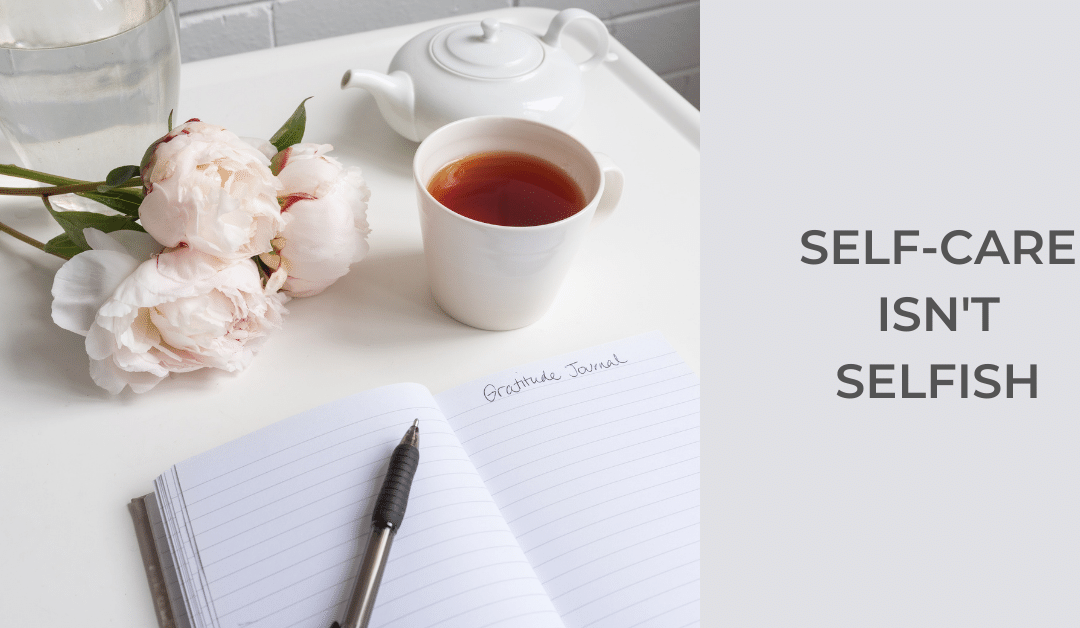
by Bag It Team | Oct 13, 2020 | Educational Articles
So, how are you?
 Let’s face it, months into life during a pandemic, everyone is struggling on some level. A Kaiser poll indicated that over 50% of Americans report that the pandemic and social-distancing are affecting their mental health. More people report that they are experiencing depression and anxiety. Emergency hotlines have noted over a 1000% increase in calls in comparison to 2019. If you need help, please get help.
Let’s face it, months into life during a pandemic, everyone is struggling on some level. A Kaiser poll indicated that over 50% of Americans report that the pandemic and social-distancing are affecting their mental health. More people report that they are experiencing depression and anxiety. Emergency hotlines have noted over a 1000% increase in calls in comparison to 2019. If you need help, please get help.
According to the Centers for Disease Control and Prevention (CDC), the COVID-19 pandemic can cause strong feelings of stress for adults and children, including:
- Fear & worry about your own health & the health of your loved ones
- Changes in sleep or eating patterns
- Difficulty sleeping or concentrating
- Worsening of chronic physical health problems
- Worsening of mental health conditions
If you’re experiencing any of these, there are ways to manage your symptoms and cope while maintaining physical distancing.
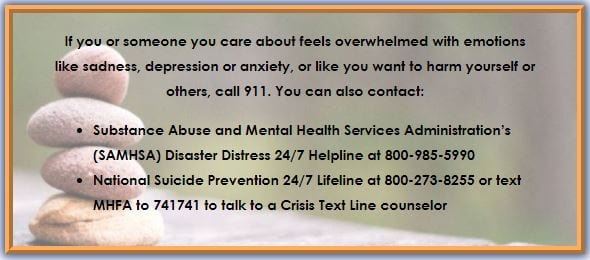
Continued from Newsletter…
 The National Alliance on Mental Illness (NAMI) offers several steps you can take to prevent this stressful time from impacting your mental health.
The National Alliance on Mental Illness (NAMI) offers several steps you can take to prevent this stressful time from impacting your mental health.
1) Maintain A Routine
If you’re not used to working from home, you may find the transition challenging. Creating a new teleworking routine will help you get into the right mindset, feel more productive and keep the boundaries between work and home from blurring. Bringing structure into your daily routine is key.
2) Take Reasonable Safety Precautions, But Don’t Go Overboard
Use only reliable sources of information, such as the CDC or Johns Hopkins University, to inform and make a plan for your health habits. Don’t let anxiety direct your behavior. Limit how much time you spend watching or listening to news that makes you upset.
3) Find Ways To “Get Going”
Now more than ever, you need to practice self-care. Practicing sound mental hygiene can help boost your psychological immunity. If you are prone to depression, you might be finding it harder to get out of bed in the morning, motivate yourself to accomplish chores or get started on a work project.
4) Try Not To Fixate On Sleep
The changes in your usual schedule, together with anxiety, can wreak havoc on your sleep. It might be helpful to listen to a guided meditation available on YouTube or one of the many meditation apps, such as 10% Happier, Headspace or the UCLA Center for Mindfulness
5) Stick To Consistent Meal Times
Eating only at meal times, rather than stress-snacking throughout the day, can also help you maintain your mental and physical wellbeing. Nourish yourself with healthy foods. However, it’s also perfectly fine to enjoy some comfort foods, like freshly baked cookies. Now is not the time to start a restrictive diet.
6) Follow Your Regular Mental Health Treatment Plan
Make sure you have an adequate supply of medication and take it as prescribed. Many mental health providers are now offering tele-therapy, either by phone or video, to comply with social distancing requirements. If you are dealing with cancer or a chronic illness, please keep connected to your healthcare provider by virtual visits or in person if safety permits (Bag It). Check with your insurer to see what virtual services they will cover.
7) Practice Mindfulness And Acceptance Techniques
 Whether you use meditation, yoga or prayer, focusing your attention on the present moment, rather than worrying about a catastrophic, uncertain future, can help you manage your distress. One good introductory resource, among many, is “Mindfulness: An Eight-Week Plan for Finding Peace in a Frantic World,” by Mark Williams and Danny Penman. The UCSD Center for Mindfulness also has free, guided meditations and useful information about the practice.
Whether you use meditation, yoga or prayer, focusing your attention on the present moment, rather than worrying about a catastrophic, uncertain future, can help you manage your distress. One good introductory resource, among many, is “Mindfulness: An Eight-Week Plan for Finding Peace in a Frantic World,” by Mark Williams and Danny Penman. The UCSD Center for Mindfulness also has free, guided meditations and useful information about the practice.
8) Be Kind To Yourself
A vast body of research conducted by the psychologist Kristin Neff and colleagues has shown the value of self-compassion for coping with emotional challenges and adversity. To ease feelings of isolation, acknowledge your struggle with kindness, rather than self-judgment, and recognize that millions of people world-wide are sharing your experience right now.

by Bag It Team | Aug 18, 2020 | Educational Articles
 Let’s say the unthinkable happens.
Let’s say the unthinkable happens.
You suddenly become hospitalized due to Covid-19 and are unable to communicate, make decisions for yourself or have a loved one by your side.
Preparation of your advance directives for health care is the best way to give voice to your wishes and what matters most to you. A healthcare power of attorney informs your doctors about your preferences for medical care and could give helpful insights to those you select to speak on your behalf. It’s impossible to account for all the possible scenarios and every potential long-term impact on your health from Covid-19. But even expressing what makes life worth living for you or the quality of life you don’t want to suffer later can guide the decisions made about treatments to provide and when.
If you’ve already put the appropriate documents in place and shared them with the right people, good job – but keep reading if you did that pre-Covid! Now is a good time to pull them out and reread them to make sure you are comfortable with your instructions in light of the pandemic. Do they reflect your treatment preferences no matter the reason for your condition or critical illness, or do you have definite ideas about treatments you do and do not want in the case of Covid? Are any changes needed to the named agents appointed to act on your behalf? Do you need to add back-up trusted agents in the event your appointed spouse/partner or other household members also fall ill?
Whether you need to complete these documents for the first time or an update is due, make this a priority today! Below is more information about where to find resources for your state as well as tools and resources to complete the process.
The Conversation Project
Downloadable life care planning packet for Arizona
Downloadable life care planning packet for Arizona: (Spanish)
AZ End of Life Partnership
Downloadable advance directives for 50 states:
aarp.org/caregiving/financial-legal/free-printable-advance-directives
Caring Info
POLST (portable medical order for emergency medical care)
Once the paperwork is in order, provide copies to the involved people in your life and also have a frank conversation with them about what’s important to you. While it may not be easy to talk about it, having the documents ready and sharing your personal values with them means everyone will feel more prepared and brings a bit of control and peace of mind – just in case the unexpected happens.
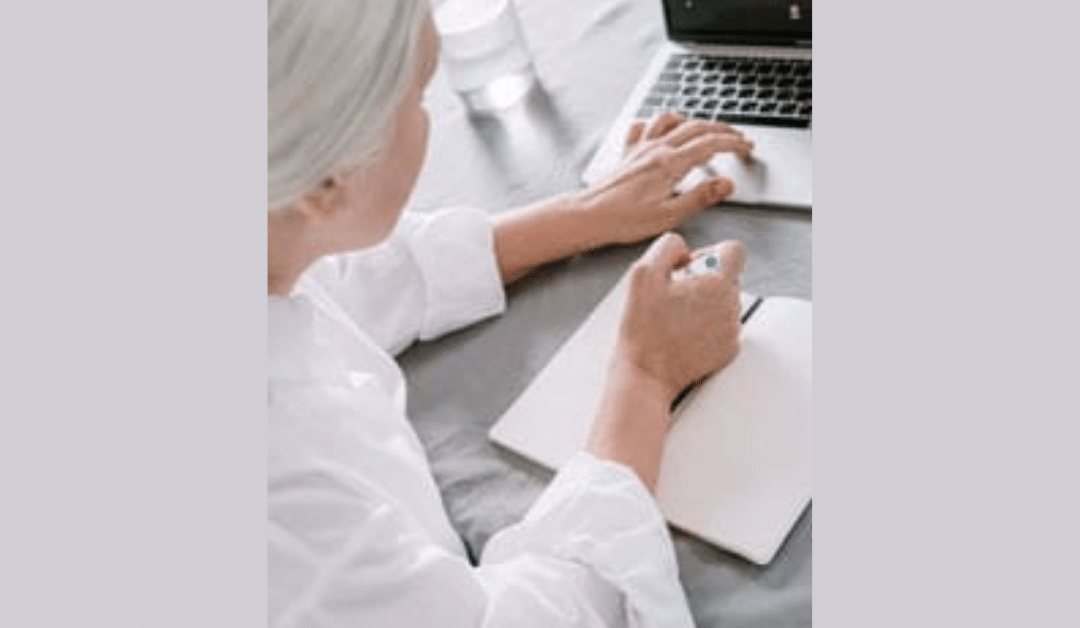
by Annettra Farrington | Jul 9, 2020 | Educational Articles
 Raise your hand if you postponed or converted to telemedicine visits for “nonessential,” routine and/or preventive healthcare early in the Covid 19 pandemic. If yes, many of us did the same thing.
Raise your hand if you postponed or converted to telemedicine visits for “nonessential,” routine and/or preventive healthcare early in the Covid 19 pandemic. If yes, many of us did the same thing.
As stay-at-home restrictions lifted, many providers started seeing more patients in person while still offering a virtual option. But there can be confusion around which appointments we should now schedule to see the doctor in person.
Simple blood tests, urine tests and direct exams can detect early cancers, diabetes, hypertension and many other illnesses. Some critical aspects of care, like a physical exam, can only be performed in the office. Another question is whether it is safe to schedule overdue or upcoming screening tests and other procedures – especially as the pandemic continues to rise in many communities.
These are shared decisions between you and your healthcare provider. Keep in mind that your provider wants you to be in touch and wants you to get the medical care that you need. Call your doctor’s office to discuss your particular healthcare situation. Speak candidly about any concerns and questions you have, as well as making clear your needs and preferences. Together you can assess what’s best for you and make a game plan for your care.
If you’ll be scheduling an appointment for an in-person visit you will probably be asked if you are experiencing any Covid-related symptoms and if anyone in your home has tested positive for Covid-19.
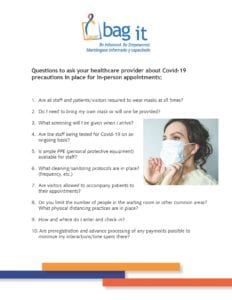 Healthcare providers receive guidelines from state, local, county health departments and the CDC about how to safely operate their facility while minimizing risk to patients and their staffs. Many providers have implemented scheduling, staffing and technology tools to complement the physical distancing procedures and environmental changes they have made. If you are not automatically provided with the pertinent detail when you schedule your appointment, click here for some questions to ask the scheduler about the practices in place. You can also check out the provider’s website for information posted there about steps they are taking.
Healthcare providers receive guidelines from state, local, county health departments and the CDC about how to safely operate their facility while minimizing risk to patients and their staffs. Many providers have implemented scheduling, staffing and technology tools to complement the physical distancing procedures and environmental changes they have made. If you are not automatically provided with the pertinent detail when you schedule your appointment, click here for some questions to ask the scheduler about the practices in place. You can also check out the provider’s website for information posted there about steps they are taking.
For more tips on how to safely navigate an in-person medical appointment, read below
- If you are experiencing Covid-related symptoms the day of your in-person appointment, call the provider’s office for guidance before you go in.
- When you arrive to the facility, you will likely find new procedures and safety precautions put in place since your last visit. Follow the requested instructions and communicate with the staff if you observe something or are asked to do something that makes you feel uncomfortable.
- Wear a mask or face covering throughout your visit unless you need to remove it for a procedure or are requested to do so by your provider.
- Wash your hands with soap and water for at least 20 seconds or use hand sanitizer with 60% alcohol before and after touching any surfaces in waiting areas, exam rooms, and other common areas. Avoid touching surfaces as much as possible.
- Avoid touching your face, including your eyes, nose and mouth.
- Cover your cough or sneeze with a tissue or your elbow, and throw away the tissue. When wearing a mask, cough or sneeze into the mask.
- Follow social distancing recommendations as much as possible.

 So, it’s National Read a Roadmap week, and I love a bizarre holiday that connects to many things I love and makes me smile. First, I recall being on a road trip a few years ago, and yes we had GPS on our phones and were using that, when we were trying to find maps of the area we were in just because (okay maybe I wanted to use them later to scrapbook the adventure). At the 3rd gas station we found one, it was dated and covered in dust and the employees thought my friend was crazy for wanting one but we were thrilled!
So, it’s National Read a Roadmap week, and I love a bizarre holiday that connects to many things I love and makes me smile. First, I recall being on a road trip a few years ago, and yes we had GPS on our phones and were using that, when we were trying to find maps of the area we were in just because (okay maybe I wanted to use them later to scrapbook the adventure). At the 3rd gas station we found one, it was dated and covered in dust and the employees thought my friend was crazy for wanting one but we were thrilled! How does reading a map and my random stories (that made me smile with the memories) connect to cancer and Bag It?
How does reading a map and my random stories (that made me smile with the memories) connect to cancer and Bag It?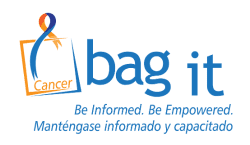


 There is a wide variety of relaxation techniques* out there to try in addition to or to pair with your breathing exercises. Sample a few to find the one that is most helpful to you. Regular practice is the key to continued and more profound benefits.
There is a wide variety of relaxation techniques* out there to try in addition to or to pair with your breathing exercises. Sample a few to find the one that is most helpful to you. Regular practice is the key to continued and more profound benefits.
 such as connecting by phone, texts, emails and virtual visits, doing research, navigating insurance or finances online, managing the household from afar, coordinating in home care or services, visiting to relieve a primary caregiver, keeping extended family and friends in the communication loop, or even helping with expenses. Even if you can’t be there in person, your role is important and there is much you can do for your loved one no matter where you live.
such as connecting by phone, texts, emails and virtual visits, doing research, navigating insurance or finances online, managing the household from afar, coordinating in home care or services, visiting to relieve a primary caregiver, keeping extended family and friends in the communication loop, or even helping with expenses. Even if you can’t be there in person, your role is important and there is much you can do for your loved one no matter where you live. Guidebook is a perfect tool to keep everything in order and in one place.
Guidebook is a perfect tool to keep everything in order and in one place.
 Let’s face it, months into life during a pandemic, everyone is struggling on some level. A Kaiser poll indicated that over 50% of Americans report that the pandemic and social-distancing are affecting their mental health. More people report that they are experiencing depression and anxiety. Emergency hotlines have noted over a 1000% increase in calls in comparison to 2019. If you need help, please get help.
Let’s face it, months into life during a pandemic, everyone is struggling on some level. A Kaiser poll indicated that over 50% of Americans report that the pandemic and social-distancing are affecting their mental health. More people report that they are experiencing depression and anxiety. Emergency hotlines have noted over a 1000% increase in calls in comparison to 2019. If you need help, please get help.
 The
The  Whether you use meditation, yoga or prayer, focusing your attention on the present moment, rather than worrying about a catastrophic, uncertain future, can help you manage your distress. One good introductory resource, among many, is “Mindfulness: An Eight-Week Plan for Finding Peace in a Frantic World,” by Mark Williams and Danny Penman. The
Whether you use meditation, yoga or prayer, focusing your attention on the present moment, rather than worrying about a catastrophic, uncertain future, can help you manage your distress. One good introductory resource, among many, is “Mindfulness: An Eight-Week Plan for Finding Peace in a Frantic World,” by Mark Williams and Danny Penman. The 
 Let’s say the unthinkable happens.
Let’s say the unthinkable happens.
 Raise your hand if you postponed or converted to telemedicine visits for “nonessential,” routine and/or preventive healthcare early in the Covid 19 pandemic. If yes, many of us did the same thing.
Raise your hand if you postponed or converted to telemedicine visits for “nonessential,” routine and/or preventive healthcare early in the Covid 19 pandemic. If yes, many of us did the same thing.
Recent Comments